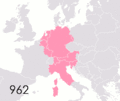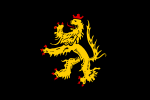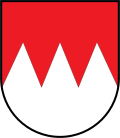 | The Electoral Rhenish Circle (German: Kurrheinischer Reichskreis) was an Imperial Circle of the Holy Roman Empire, created in 1512. The circle derived... 5 KB (119 words) - 01:57, 16 January 2024 |
 | imperial circles as part of the Imperial Reform: the Bavarian Circle the Franconian Circle the Saxon Circle the Swabian Circle the Upper Rhenish Circle the... 7 KB (677 words) - 02:45, 20 July 2023 |
 | The Upper Rhenish Circle (German: Oberrheinischer Reichskreis) was an Imperial Circle of the Holy Roman Empire established in 1500 on the territory of... 28 KB (120 words) - 14:14, 11 March 2024 |
 | Thurn und Taxis (category Electoral Rhenish Circle) The Princely House of Thurn and Taxis (German: Fürstenhaus Thurn und Taxis, [ˈtuːɐ̯n ʔʊnt ˈtaksɪs]) is a family of German nobility that is part of the... 22 KB (2,358 words) - 22:24, 18 April 2024 |
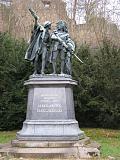 | Knights' War (category Electoral Rhenish Circle) Date 27 August 1522 – 6 May 1523 Location Electoral Rhenish and Upper Rhenish circles of the Holy Roman Empire (present-day Southern Germany) Result Imperial... 16 KB (1,909 words) - 15:02, 30 April 2024 |
 | Upper, Middle and Lower Franconia—while western Rhenish Franconia belonged to the Upper Rhenish Circle. The title of a "Duke of Franconia" was claimed... 12 KB (556 words) - 01:45, 4 January 2024 |
 | Electoral Rhenish circles, confirmed by the 1521 Diet of Worms. After 1512, the bulk of the remaining territories not comprised by Imperial Circles were... 7 KB (736 words) - 11:48, 7 November 2023 |
 | Electorate of Mainz (redirect from Electoral Mainz) tradition of the cathedral chapter electing a successor to the bishop. Electoral Palace, Mainz Schloss Johannisburg in Aschaffenburg Palace of the Mainz... 9 KB (706 words) - 05:37, 10 January 2024 |
 | Arenberg (category Electoral Rhenish Circle) area of 413 km2 and a population of 14,800. It belonged to the Electoral Rhenish Circle and was bordered by the duchy of Jülich, the Archbishopric of Cologne... 9 KB (675 words) - 13:30, 24 April 2024 |
 | Electorate of Cologne (redirect from Electoral Cologne) Electorate of Cologne (German: Kurfürstentum Köln), sometimes referred to as Electoral Cologne (German: Kurköln), was an ecclesiastical principality of the Holy... 10 KB (1,087 words) - 13:29, 31 October 2023 |
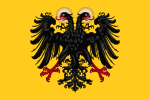 | triplum. The figures for the contingents to be supplied by each Imperial Circle were little altered until the demise of the Empire. In practice, they were... 11 KB (1,086 words) - 17:38, 6 April 2024 |
Nieder-Isenburg (category Electoral Rhenish Circle) Nieder-Isenburg (often called Lower Isenburg) was a small mediaeval county in northern Rhineland-Palatinate, Germany. It was located to the east of the... 4 KB (278 words) - 09:36, 20 April 2024 |
 | 1782 accredited as ambassador to the Electoral Rhenish Circle, Upper Rhenish Circle, Swabian Circle, Franconian Circle, Electorate of Mainz, Electorate of... 8 KB (699 words) - 13:42, 3 April 2024 |
 | Electorate of Trier (redirect from Electoral Trier) was held in Trier in 1512, during which the demarcation of the Imperial Circles was definitively established. Between 1581 and 1593, the Trier witch trials... 13 KB (1,402 words) - 18:56, 17 April 2024 |
 | Vest Recklinghausen (category Electoral Rhenish Circle) fiefdom of the Archbishopric of Cologne and thus it belonged to the Electoral Rhenish Circle. The administrator lived in castle Westerholt, located in Herten... 7 KB (685 words) - 17:14, 26 February 2024 |
 | Palatinate (region) (redirect from Palatinate, Rhenish) The Palatinate (German: Pfalz; Palatine German: Palz), or the Rhenish Palatinate (Rheinpfalz), is a historical region of Germany. Palatinate occupies... 25 KB (3,020 words) - 05:39, 24 April 2024 |
territory to Bavaria. In 1837, the Circle of the Rhine was renamed the Palatinate (Pfalz). It was also referred to as the Rhenish Palatinate (Rheinpfalz). The... 18 KB (1,129 words) - 19:00, 25 March 2024 |
Rhineland-Palatinate, Germany The Electoral Palatinate, a state that existed until 1803 Rhenish Palatinate, another name for the Circle of Rhine (Rheinkreis) or... 585 bytes (99 words) - 07:49, 29 October 2023 |
 | Eastern Franconia, Rhenish Franconia was divided and extinguished. Its territories became part of the Imperial Upper Rhenish Circle in 1500. As of the... 9 KB (963 words) - 17:37, 19 March 2024 |
 | List of coats of arms with the Palatine Lion (category Electoral Palatinate) variations from the normal design or to links to separate articles Electoral Rhenish Circle Wappenbuch des Landkreises Cochem-Zell, Darmstadt 2001, v. Alfons... 50 KB (132 words) - 07:00, 8 May 2024 |
Social market economy (redirect from Rhenish capitalism) Marktwirtschaft), also called Rhine capitalism, Rhine-Alpine capitalism, the Rhenish model, and social capitalism, is a socioeconomic model combining a free-market... 58 KB (7,307 words) - 15:28, 15 April 2024 |
 | German comital family (Grafen) which held large territories in Rhenish Hesse, Electoral Palatinate and Upper Swabia. The distant origins of this family... 4 KB (318 words) - 13:26, 5 September 2023 |



